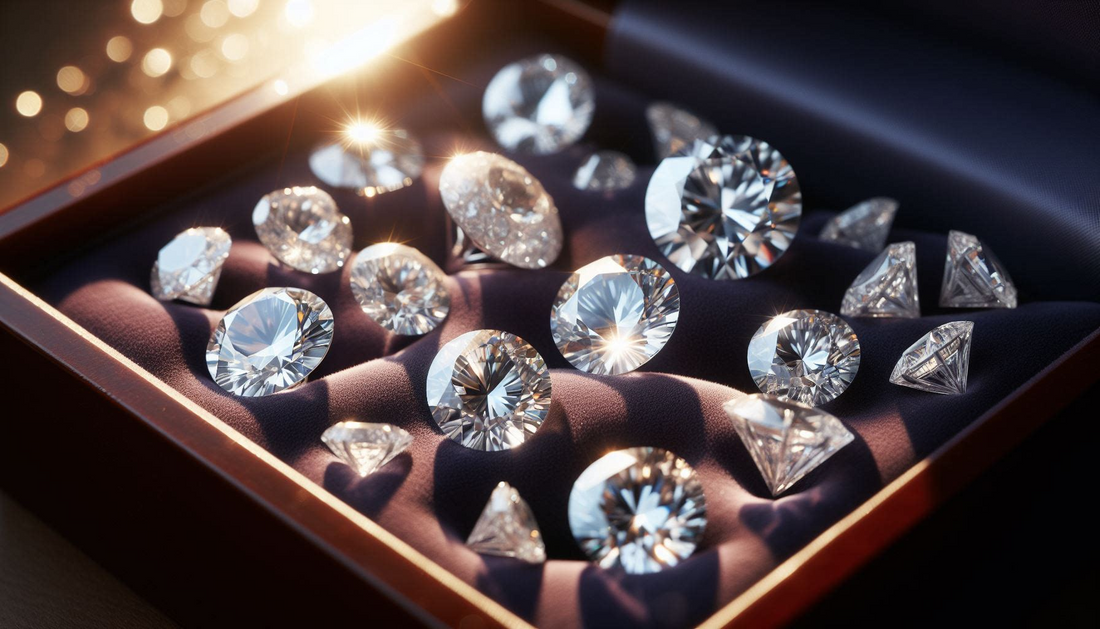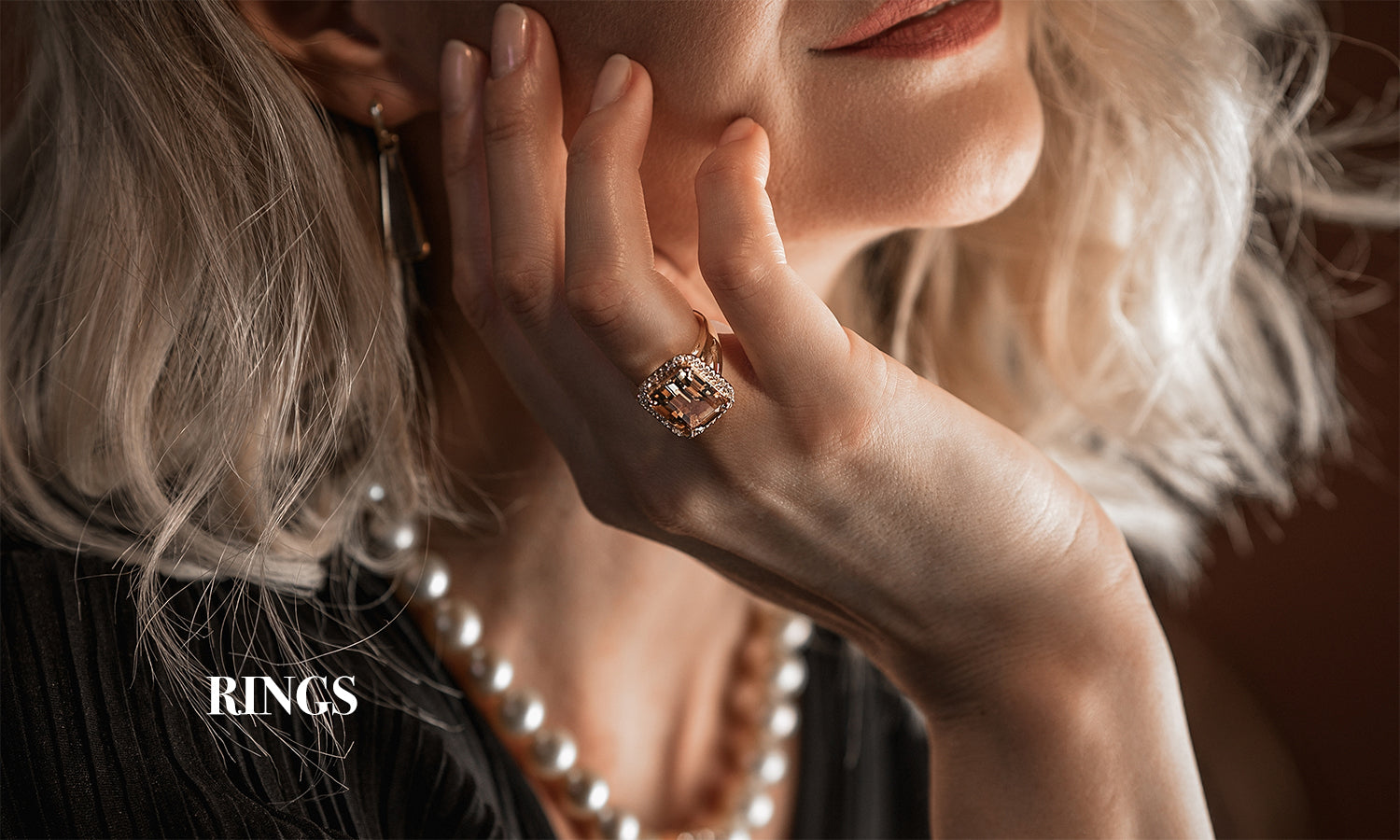
The Rise of Lab-Grown Diamond Jewelry Displays: A Shining Revolution in Retail
Share
The jewelry industry is undergoing a significant transformation with the rise of lab-grown diamonds. These ethically produced gems have captivated the market, offering consumers a sustainable and affordable alternative to natural diamonds. As the popularity of lab-grown diamonds soars, retailers are adapting by creating innovative jewelry displays that highlight the unique benefits and beauty of these gemstones. This article explores the evolution of lab-grown diamond jewelry displays and how they are revolutionizing the retail experience.
|
Aspect |
Details |
|
Popularity of Lab-Grown Diamonds |
- Ethical sourcing - Cost-effective - Sustainable production |
|
Educational Signage and Digital Displays |
- Infographics - Digital screens - QR codes for additional information |
|
Minimalist and Eco-Friendly Design |
- Use of reclaimed wood, recycled metals, and organic fabrics |
|
Highlighting Customization Options |
- Customizable settings - Variety of cuts - Personalized engravings |
|
Enhanced Lighting Techniques |
- Advanced lighting to showcase diamond brilliance - Use of LED lighting, backlit panels, and spotlights |
|
Interactive and Immersive Experiences |
- Touchscreens - Virtual try-on stations - Augmented reality (AR) showrooms |
The Growing Popularity of Lab-Grown Diamonds

Lab-grown diamonds, also known as synthetic or cultured diamonds, are created in controlled environments using advanced technological processes that replicate the conditions under which natural diamonds form. These diamonds possess the same physical, chemical, and optical properties as their natural counterparts, making them indistinguishable to the naked eye. However, lab-grown diamonds come with several advantages:
- Ethical Sourcing:Lab-grown diamonds eliminate the ethical concerns associated with mining, such as environmental degradation and human rights violations.
- Cost-Effective:Typically, lab-grown diamonds are 20-40% less expensive than natural diamonds, making luxury more accessible to a broader audience.
- Sustainability:Producing lab-grown diamonds has a significantly lower environmental impact compared to traditional diamond mining.
Innovative Jewelry Displays for Lab-Grown Diamonds
To effectively market lab-grown diamonds, retailers are investing in creative and informative displays that educate and engage consumers. Here are some key trends in lab-grown diamond jewelry displays:
1. Educational Signage and Digital Displays
Retailers are incorporating educational elements into their displays to inform customers about the benefits and origins of lab-grown diamonds. This includes:
- Infographics: Simple and visually appealing graphics that explain the process of creating lab-grown diamonds.
- Digital Screens:Interactive displays that allow customers to watch videos or slideshows about the environmental and ethical advantages of lab-grown diamonds.
- QR Codes:Scannable codes that provide detailed information and links to additional resources, such as comparison charts and certification details.
2. Minimalist and Eco-Friendly Design
Lab-grown diamond displays often reflect the sustainable nature of the product. Minimalist designs using eco-friendly materials like reclaimed wood, recycled metals, and organic fabrics create a cohesive and responsible brand image. This not only enhances the visual appeal but also aligns with the values of environmentally conscious consumers.
3. Highlighting Customization Options
One of the significant advantages of lab-grown diamonds is the ability to customize jewelry pieces. Displays that showcase customizable options, such as interchangeable settings, a variety of cuts, and personalized engravings, attract customers looking for unique and bespoke items. Retailers are using modular displays that can be easily reconfigured to highlight new collections or special promotions.
4. Enhanced Lighting Techniques
Proper lighting is crucial to showcasing the brilliance of diamonds. For lab-grown diamond displays, retailers are using advanced lighting techniques to highlight the clarity and sparkle of the gems. LED lighting, backlit panels, and spotlights are strategically placed to ensure that each piece is presented in the best possible light.
5. Interactive and Immersive Experiences
Creating an interactive and immersive shopping experience is key to attracting modern consumers. Retailers are incorporating touchscreens and virtual try-on stations that allow customers to see how different pieces will look on them. Augmented reality (AR) technology is also being used to create virtual showrooms, providing an engaging way to explore lab-grown diamond collections from anywhere.
Conclusion
The rise of lab-grown diamonds is reshaping the jewelry industry, offering a sustainable, ethical, and affordable alternative to traditional diamonds. Retailers are responding by designing innovative jewelry displays that not only highlight the unique qualities of lab-grown diamonds but also provide an engaging and educational shopping experience. As consumers become more conscious of their purchasing decisions, these displays play a crucial role in promoting the benefits of lab-grown diamonds and driving their growing popularity.
Embracing these trends, the jewelry industry is poised to shine brighter than ever, meeting the demands of a new generation of conscious consumers.




